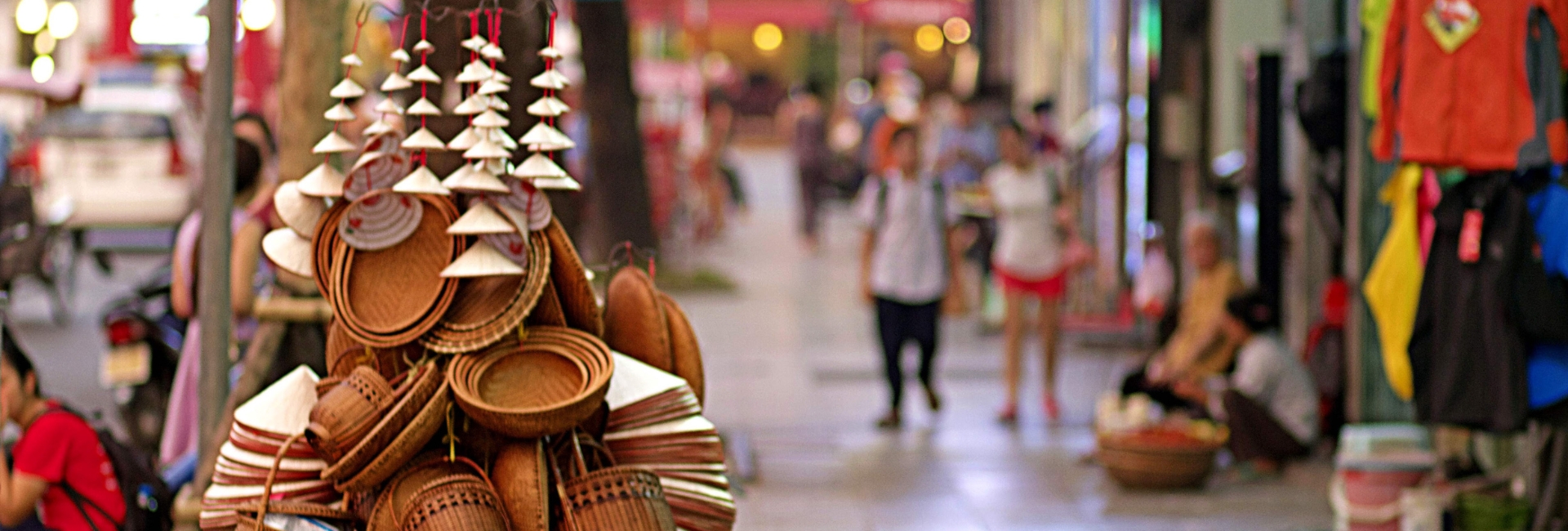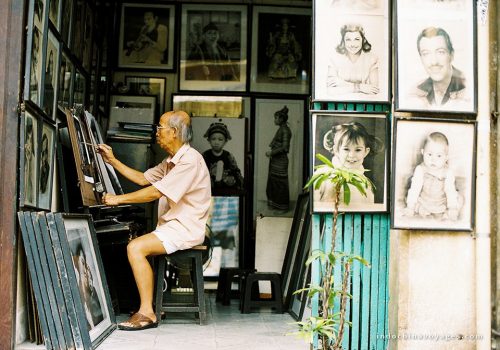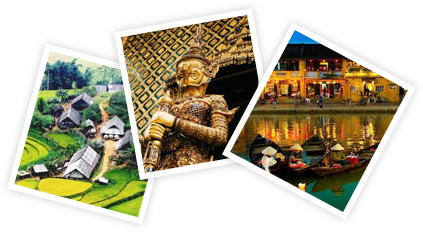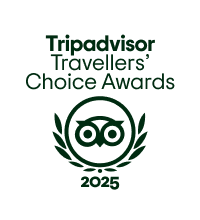Vietnam offers a diverse range of transportation options to explore the country, from flights and trains to car rentals, shuttle buses, cruises, and other unique modes of transport. In this comprehensive travel guide, Indochina Voyages will provide you with valuable information to know the best way to get to and get around in your Vietnam Tour.
Flight
Flying is a convenient and time-saving option for traveling long distances within Vietnam, particularly when traveling from north to south or vice versa. There are two main types of flights available: international flights and domestic flights.
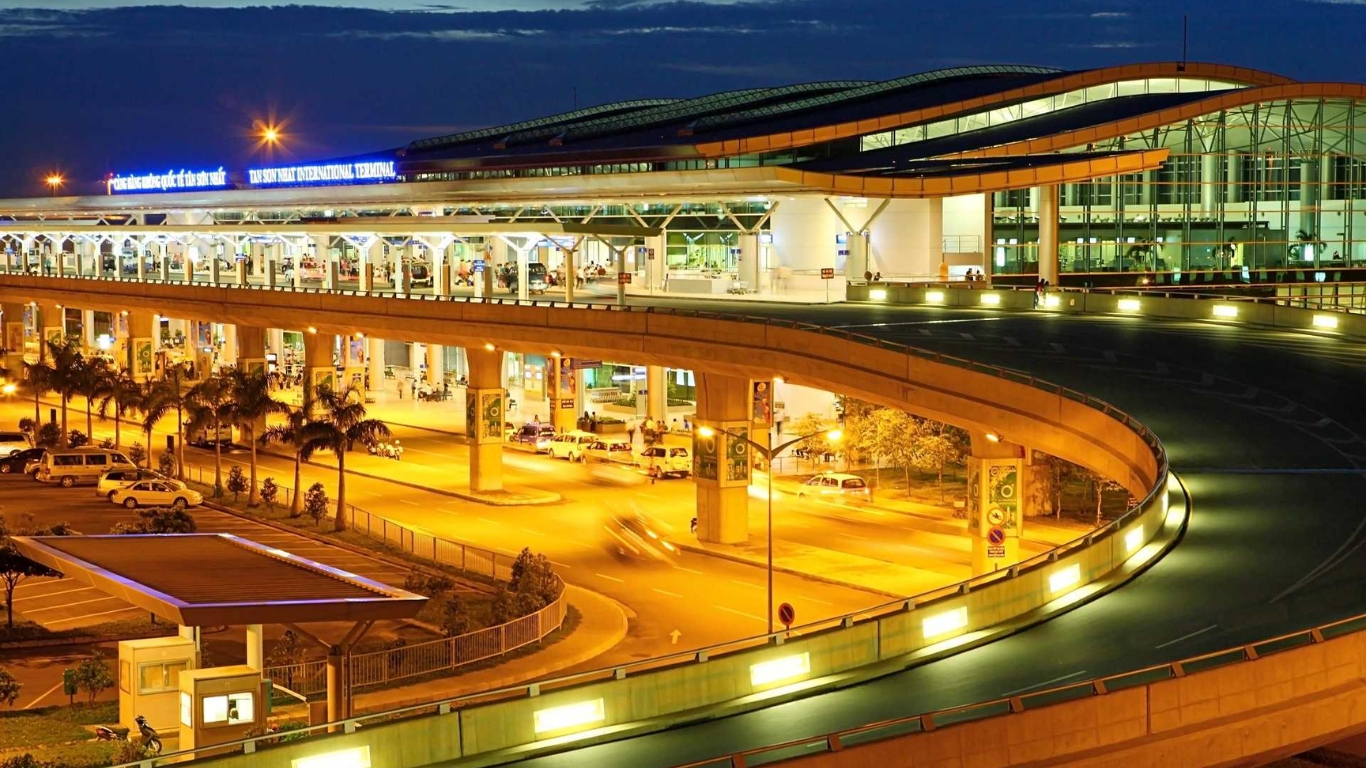
International Flights
Vietnam has two main international airports that serve as gateways to the country, which are located in Hanoi in the North and Ho Chi Minh City (Saigon) in the South of the country. These airports have connections to numerous major cities around the world. Besides providing flights internationally, they also absolutely provide flights in the country, of course. They are:
- Noi Bai Airport (Hanoi): located on the outskirts of the city, which is approximately 30 kilometers (18.6 miles) from Hanoi Old Quarter. It takes around 45 minutes to 1 hour, depending on traffic conditions when traveling from this airport to Hanoi Old Quarter.
- Tan Son Nhat Airport (Saigon): Different from Noi Bai Airport, this airport is located in District 1 of Ho Chi Minh City (Saigon). It usually takes around 15 to 30 minutes to travel to the hotel in Saigon in District 1, considering moderate traffic conditions.
When booking an international flight to Vietnam, it is advisable to compare prices and services offered by different airlines. Some popular airlines that operate international flights to and from Vietnam include Vietnam Airlines, Thai Airways, Singapore Airlines, Cathay Pacific, and Emirates.
NOTE: When you arrive at the airport in Vietnam, be cautious of drivers who may approach you offering transportation services. Some of them may overcharge you. To ensure a smooth experience, it is recommended to have a reputable travel company welcome you at the airport. They will provide reliable transportation services at fair prices, ensuring your safety and peace of mind throughout your journey in Vietnam.
Domestic Flights
For domestic travel within Vietnam, flying is an efficient way to cover long distances quickly. Vietnam has an extensive network of domestic airports, making it easy to reach various destinations across the country. Here is a list of domestic airports in Vietnam, arranged from north to south:
- Noi Bai International Airport (HAN) – Hanoi
- Cat Bi International Airport (HPH) – Hai Phong
- Vinh International Airport (VII) – Vinh
- Dong Hoi Airport (VDH) – Dong Hoi
- Phu Bai International Airport (HUI) – Hue
- Da Nang International Airport (DAD) – Da Nang
- Chu Lai International Airport (VCL) – Quang Nam
- Phu Cat Airport (UIH) – Quy Nhon
- Cam Ranh International Airport (CXR) – Nha Trang
- Lien Khuong Airport (DLI) – Da Lat
- Tan Son Nhat International Airport (SGN) – Ho Chi Minh City (Saigon)
- Can Tho International Airport (VCA) – Can Tho
- Phu Quoc International Airport (PQC) – Phu Quoc Island
These airports provide convenient access to various regions and cities within Vietnam. The major domestic airlines in Vietnam are Vietnam Airlines, VietJet Air, and Bamboo Airways. In there, Vietnam Airlines is the national carrier of Vietnam and operates the most flights on a daily basis. They offer a wide range of domestic and international routes, providing a reliable option for travelers with full of services.
For affordable deals and short-haul flights within Vietnam, Vietjet, Bamboo Airways, and Pacific Airlines are popular choices. Among them, Vietjet is well-known as a low-cost airline that offers competitive fares. However, it’s important to note that Vietjet flights can sometimes experience delays. It’s recommended to keep this in mind when planning your itinerary and allow for some flexibility in case of schedule changes.
When booking your flights with any airline, it’s advisable to check the latest reviews, compare prices, and consider factors such as flight schedules, baggage allowances, and overall customer satisfaction. And remember to always check the airline’s website or contact their customer service for the most up-to-date information regarding flight schedules, delays, and any other relevant details before your travel date.
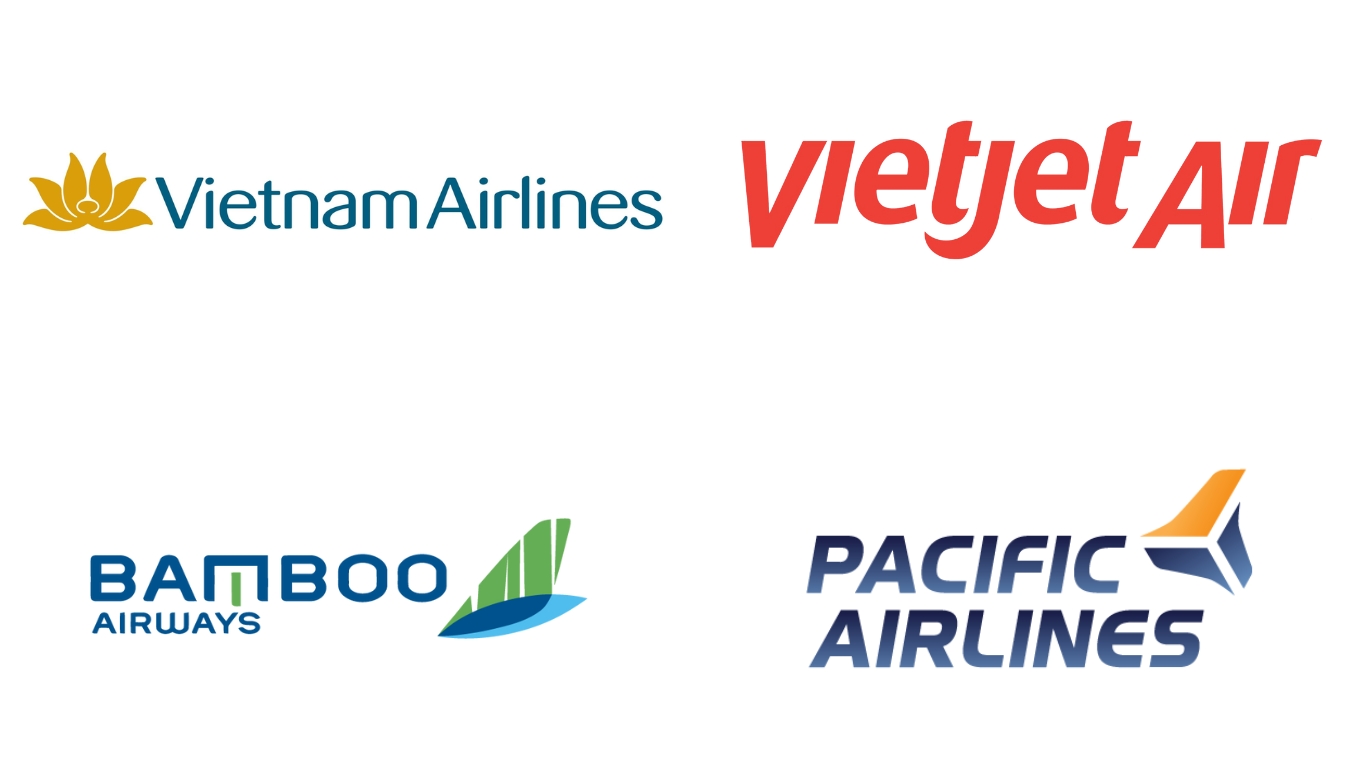
For your reference, here are the websites for the airlines mentioned:
- Vietnam Airlines: https://www.vietnamairlines.com/
- Vietjet: https://www.vietjetair.com/
- Bamboo Airways: https://www.bambooairways.com/
- Pacific Airlines: https://www.pacificairlines.com/
When planning your domestic flights, it is important to consider the duration of your trip and the locations you wish to visit. Flights are especially useful when traveling between major cities like Hanoi, Ho Chi Minh City, Da Nang, Nha Trang, and Hue. They offer convenience and time savings, allowing you to maximize your exploration of Vietnam’s diverse regions.
Train in Vietnam
Travel by train in Vietnam provides an alternative mode of transport, offering a unique travel experience while showcasing the country’s stunning landscapes. Railway connecting from north to south in Vietnam is one of the most beautiful railways in the world following the trend of 2023. The railway system connects major cities and towns, providing an opportunity to witness the beauty of Vietnam’s countryside. There are 2 main different types of trains available in Vietnam:
Seat Trains
Most seat trains offer economy class seating options, which are similar to standard train seats found in many countries. Seat trains are typically divided into public cars, where seats are arranged in a shared space without individual compartments, which are usually in a row or in facing pairs. Here are some features available in this type:
- Reclining Seats: The seats are usually adjustable and provide a certain degree of recline for passenger comfort.
- Air Conditioning: Seat trains are equipped with air conditioning to maintain a comfortable temperature inside the train compartments.
- Luggage Storage: There are overhead compartments, racks, or designated spaces for storing luggage during the journey.
- Onboard Amenities: Some seat trains may have amenities such as power outlets, reading lights, and onboard food and beverage services available for purchase.
- Convenience for Short Journeys: Seat trains are commonly used for shorter journeys or for commuting between nearby cities.
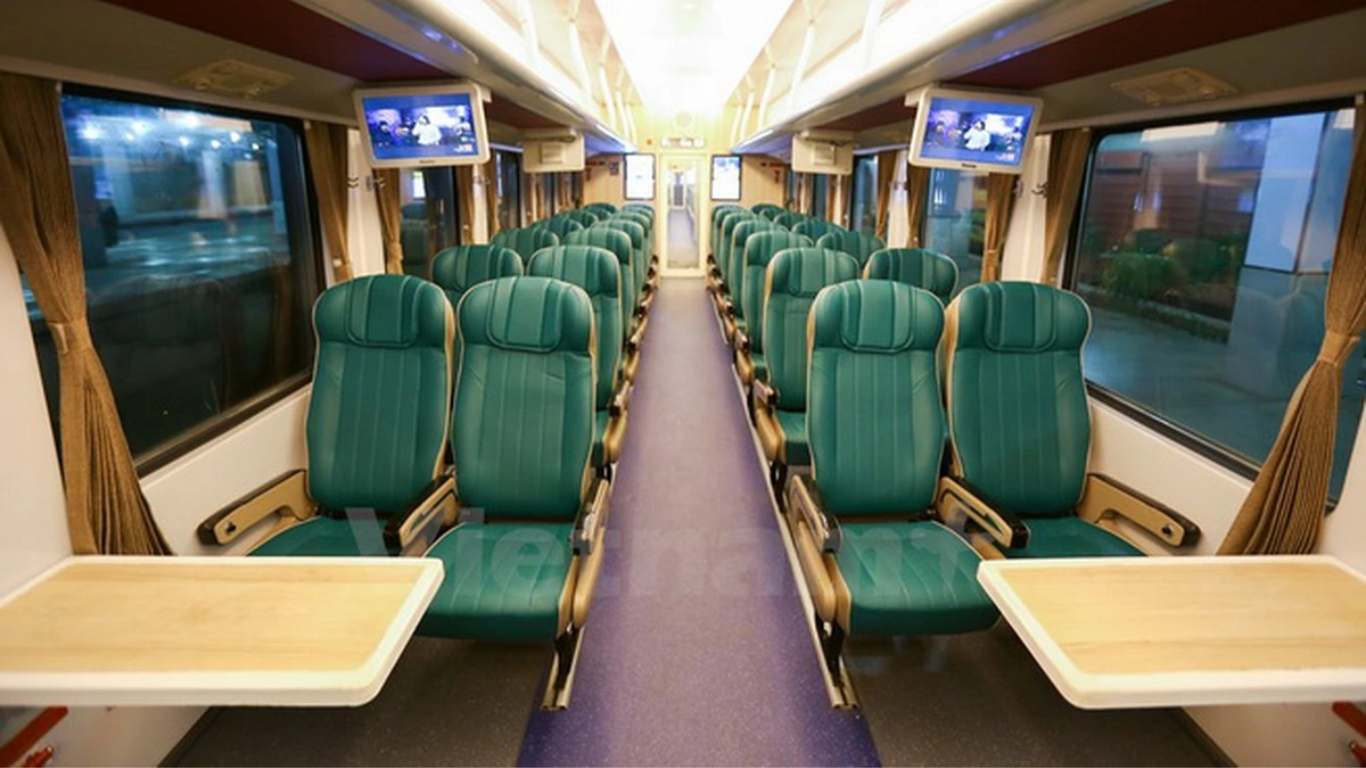
Overnight Sleeper Trains
Different from the publication of seat trains, Overnight sleeper trains offer private compartments that provide more privacy and comfort during the journey. The compartments are typically designed as 4-bed or 6-bed configurations, with curtains or doors for privacy.
- Bedding Services: Train staff to provide bedding services, including pillows, blankets, and sheets, to ensure a comfortable sleep.
- Security and Privacy: Private compartments offer a secure and private space for passengers to rest during the overnight journey.
- Some trains also offer a separate car that serves as a canteen to provide food, or there will be food carts passing by to provide food for you like on an airplane.
- Advanced Options: Some overnight sleeper trains may offer more luxurious and spacious compartments, including 2-bed compartments that provide a higher level of comfort and privacy.
- Longer Journeys: Overnight sleeper trains are commonly used for longer journeys that span several hours or overnight trips between distant destinations.
Please note that these features can vary depending on the specific train operator, class, and route. It’s always a good idea to check with the train operator or visit their official website for detailed information about the specific train service you plan to use. Here is the Vietnam Railway Website: https://dsvn.vn/#/
Consider the duration of the journey and the destinations you wish to visit along the way. Some popular train stations to consider for your itinerary include Hanoi Railway Station, Lao Cai Railway Station (to Sapa), Hue Railway Station, Dong Hoi Railway Station (to Quang Binh, Phong Nha Ke Bang), Da Nang Railway Station, Nha Trang Railway Station, and Saigon Railway Station. Booking your train tickets in advance is recommended, especially during peak travel seasons.
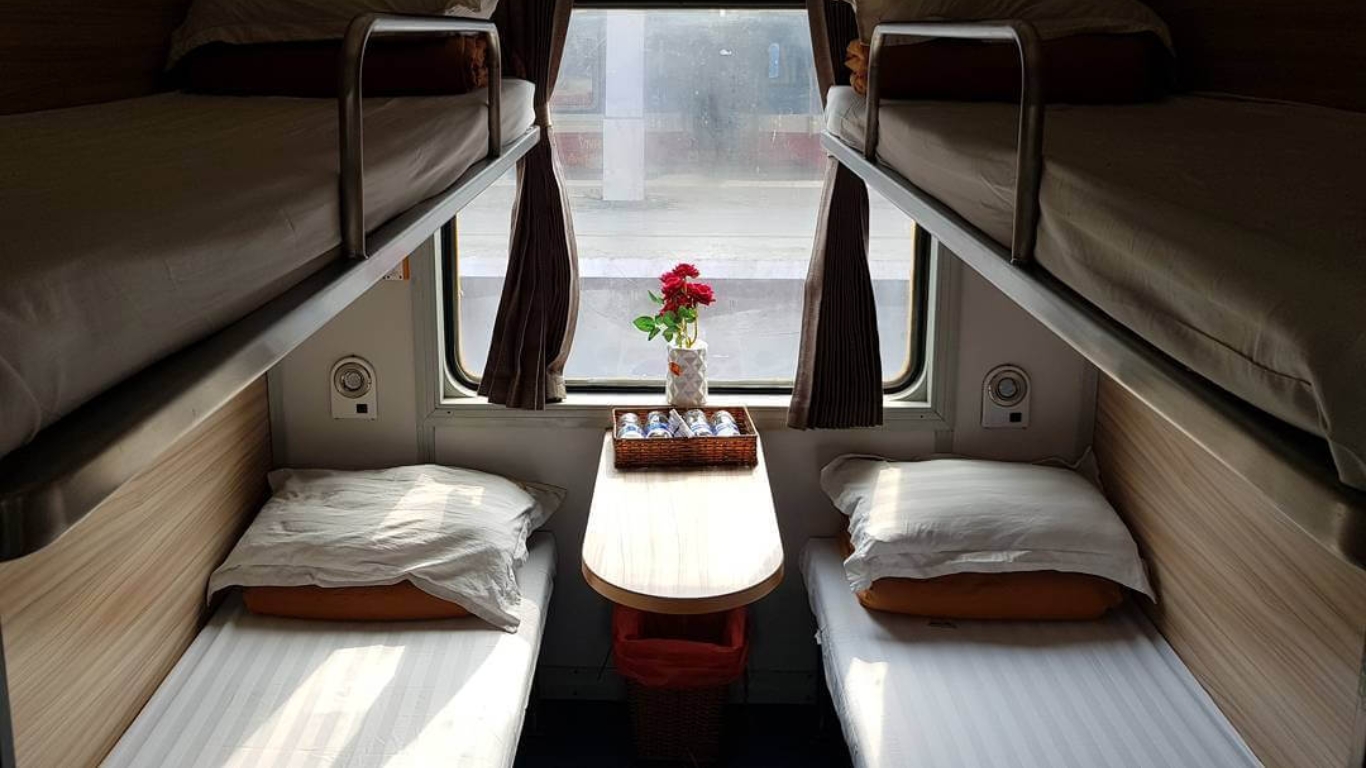
Car Rental
Car rental services in Vietnam are widely available and offer a convenient option for travelers who want to explore the country at their own pace. Here are some additional details about car rental in Vietnam:
- Rental Agencies: There are numerous car rental agencies operating in major cities and popular tourist destinations throughout Vietnam. These agencies offer a variety of vehicles, including sedans, SUVs, vans, and sometimes motorcycles or scooters. Rental Car – A Brand of Indochina Voyages also offers legit car rental services for your reference.
- Requirements: To rent a car in Vietnam, you typically need a valid driver’s license from your home country or an International Driving Permit (IDP). Some rental agencies may also require you to be at least 21 or 25 years old, depending on their policies.
- Booking: It is recommended to book your car rental in advance, especially during peak travel seasons, to ensure availability. Online booking platforms or directly contacting rental agencies are common ways to make reservations.
- Vehicle Options: Car rental agencies in Vietnam offer a range of vehicle options to suit different needs and group sizes. From compact cars for solo travelers or couples to larger vehicles for families or groups, there is usually a choice to accommodate your requirements.
- Rental Duration: Car rentals in Vietnam can be arranged for various durations, ranging from a few hours to several weeks or even months. Rates may vary depending on the rental period, so it’s advisable to clarify the terms and conditions with the rental agency.
- Driving in Vietnam: It’s important to note that driving conditions in Vietnam can be challenging, especially in busy cities like Hanoi or Ho Chi Minh City. Traffic can be chaotic, and road rules may differ from what you are accustomed to. Exercise caution and familiarize yourself with local traffic regulations before embarking on a self-drive journey.
- Insurance: When renting a car, it’s important to inquire about insurance coverage. Rental agencies may offer different insurance options, including collision damage waiver (CDW) or third-party liability coverage. Understanding the extent of insurance coverage is crucial for peace of mind during your rental period.
- Fuel: Most rental cars in Vietnam operate on gasoline (petrol). Gas stations are readily available along major roadways, and payment is typically made in cash.
Remember to carefully read and understand the terms and conditions of the rental agreement, including any additional fees, mileage restrictions, and return policies. It’s also advisable to inspect the vehicle for any pre-existing damages and document them with the rental agency before starting your journey. You can easily find car rental services through travel agencies or rental agencies.
Shuttle Bus
Shuttle buses are a popular mode of transport for short to medium-distance travel within Vietnam. They are commonly used for transportation between cities, tourist attractions, and airports. Shuttle bus services are reliable, affordable, and widely available.
Many travel agencies and hotels offer shuttle bus services, providing a convenient way to reach various destinations. It is recommended to inquire about shuttle bus options at your accommodation or consult with local tour operators to find the most suitable routes and schedules for your travel plans. Here are some key points to know about shuttle buses in Vietnam:
- Routes: Shuttle buses operate on specific routes, typically connecting major cities, airports, tourist destinations, and transportation hubs. Common routes include city-to-city connections, airport transfers, and popular tourist routes.
- Timings: Shuttle buses adhere to a fixed schedule, with designated departure and arrival times. The frequency of shuttle bus services can vary depending on the route and demand, but they generally operate throughout the day.
- Ticketing: Tickets for shuttle buses can be purchased at ticket counters, travel agencies, or online platforms. It is advisable to book your tickets in advance, especially during peak travel seasons or for popular routes.
- Affordability: Shuttle buses are known for their affordability, making them a budget-friendly option for travelers. The fares are typically lower compared to other modes of transportation such as taxis or private car rentals.
- Safety: Shuttle bus operators prioritize passenger safety. The drivers are trained professionals who adhere to traffic regulations and maintain a safe driving environment. Additionally, shuttle buses are regularly inspected and maintained to ensure their roadworthiness.
- Luggage Storage: Shuttle buses provide storage compartments or designated areas for stowing luggage during the journey. However, the available space may vary depending on the bus size and capacity, so it’s advisable to pack accordingly.
- Accessibility: Shuttle buses are generally accessible to passengers with disabilities or mobility challenges. However, it’s recommended to check with the specific shuttle bus operator regarding their accessibility features and provisions.
Cruises
Cruises offer a unique and leisurely way to explore Vietnam’s breathtaking coastal landscapes and iconic waterways. There are two notable cruise destinations in Vietnam: Halong Bay and the Mekong River.
Halong Bay Cruise
Halong Bay, a UNESCO World Heritage Site, is renowned for its stunning limestone karsts and emerald waters. Taking a cruise through Halong Bay allows you to marvel at the scenic beauty of this natural wonder. Various cruise operators offer day trips and overnight cruises (often 2 days 1 night or 3 days 2 nights), providing opportunities for activities such as kayaking, cave exploration, and visiting floating fishing villages.
A Halong Bay cruise is an exceptional way to explore this iconic destination, offering a harmonious blend of natural wonders, cultural experiences, and relaxation amidst stunning scenery.
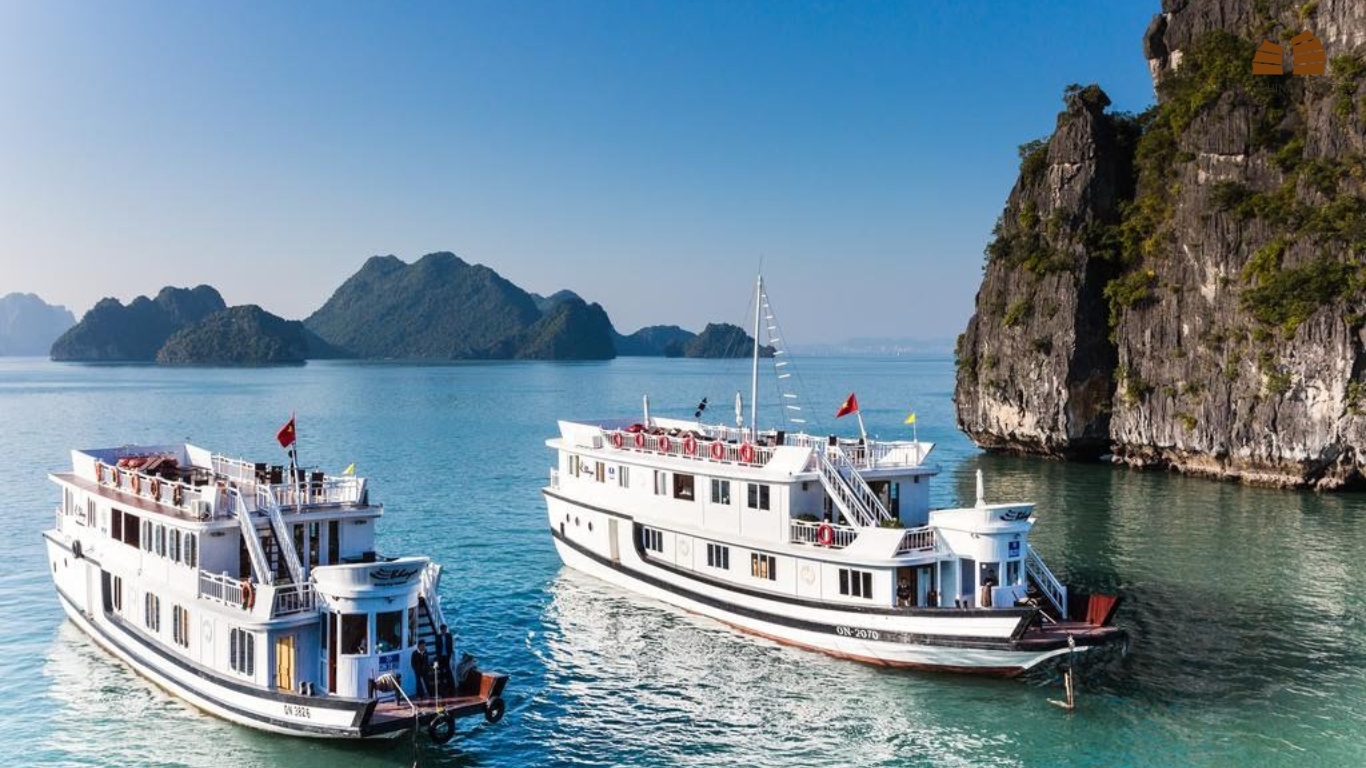
What can you expect in a Halong Bay Cruise?
- Breathtaking scenery of limestone karsts and emerald waters
- Various cruise options catering to different budgets and preferences
- Itineraries that include cave explorations, kayaking, and visits to floating villages
- Comfortable accommodations with panoramic views of the bay
- Delicious onboard dining featuring fresh seafood and Vietnamese cuisine
- Emphasis on safety and high-quality experiences
- Captivating sunrise and sunset views over the bay
- Opportunities for cultural immersion through interactions with local communities
- Commitment to environmental conservation and sustainable practices
For more details and travel tips about Halong Bay Cruises, you can read our blog: Halong Bay Guide: Unlocking the Ultimate Cruise Experience
Mekong River Cruise
A Mekong River cruise offers an enchanting journey through the picturesque landscapes of the Mekong Delta. Cruising along the Mekong River allows you to discover the vibrant local culture, floating markets, and lush greenery of the region. There are different cruise options available, ranging from short excursions to multi-day cruises.
Mekong River Cruises often have a long duration with the price is quite expensive. They offer tranquil and slow itineraries with high quality, which help you immerse in the peaceful and unique of the Mekong Delta Region, and delve into the vibrant cultures. The itineraries often travel in Vietnam or combine Vietnam with Laos or Cambodia.
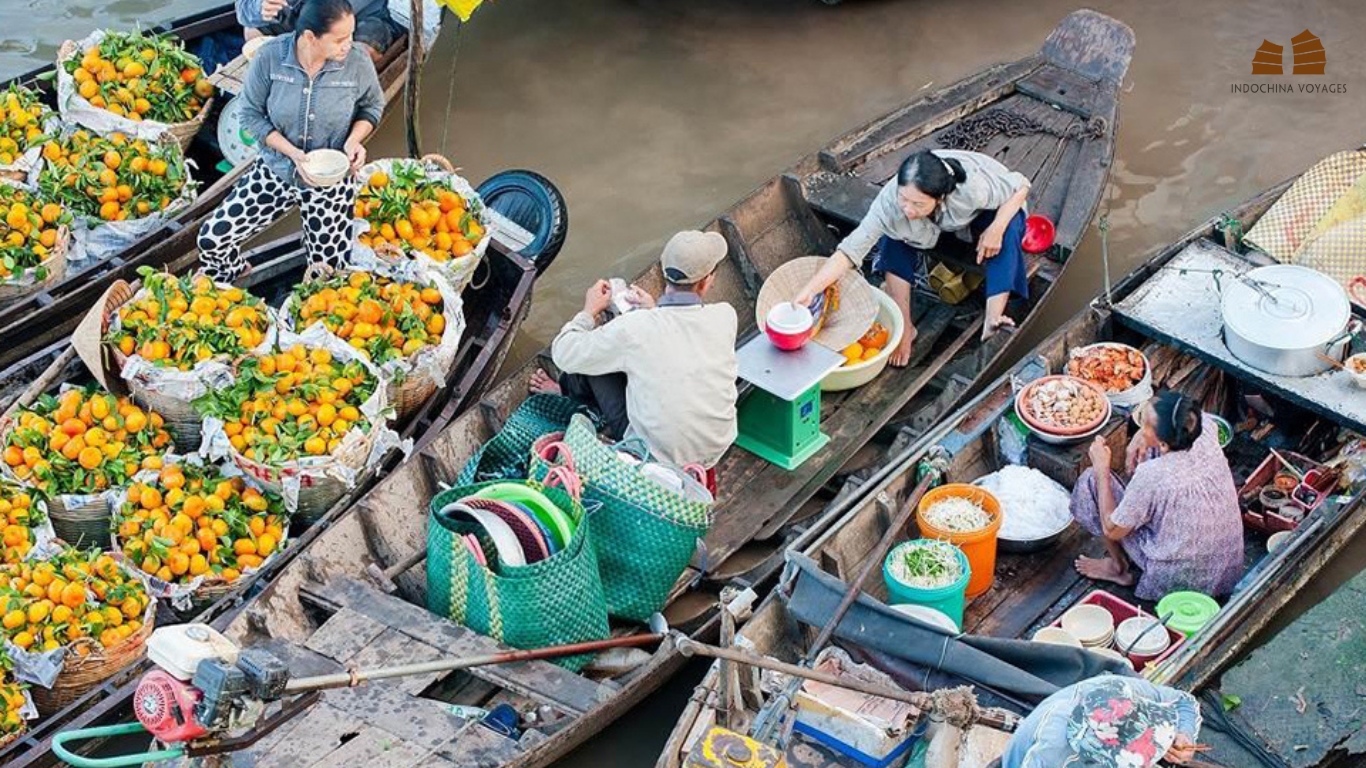
What can you expect in a Mekong River Cruise?
- Spectacular views of the Mekong River and its scenic surroundings.
- Immersive cultural experiences and interactions with local communities along the river.
- Visits to vibrant floating markets where you can witness the bustling trade and local life on the water.
- Exploration of significant landmarks, temples, and historic sites along the Mekong River.
- Delightful culinary experiences, enjoying a variety of Vietnamese and Southeast Asian cuisine.
- Onboard activities and entertainment, including cultural performances and traditional music.
- Observing the daily activities of riverside communities, gaining insights into local customs and traditions.
- Comfortable accommodations and amenities are provided on the cruise ship.
- Opportunities to explore the diverse ecosystems and wildlife along the Mekong River.
- Educational experiences about the ecological and cultural significance of the Mekong River.
Other Transport for Getting Around
In addition to shuttle buses and cruises, Vietnam offers a range of other transportation options that provide unique and immersive ways to get around the country.
Motorbike
Motorbikes are an iconic mode of transport in Vietnam and a popular choice among locals and adventurous travelers alike. Renting a motorbike is a popular choice for adventurous travelers who wish to explore Vietnam independently. It offers flexibility and the opportunity to discover off-the-beaten-path destinations. However, it is essential to have prior experience riding motorbikes and to exercise caution on the roads.
Cyclos
Cyclos are three-wheeled, pedal-powered vehicles with a seat at the front for passengers. They offer a leisurely and nostalgic way to explore cities like Hanoi and Ho Chi Minh City, you also find them in Nha Trang. Cyclo drivers act as guides and can provide insights into the local culture and landmarks as they pedal you through bustling streets and vibrant neighborhoods.
Cyclos are ideal for short distances and experiencing the local atmosphere. However, please be careful to check the price before hopping on the Cyclos, because when you are a tourist, you may be overcharged by the local drivers.
Cycling
Vietnam’s diverse landscapes make it a great destination for cycling enthusiasts. Many cities and towns have bike rental services, and guided cycling tours are available in various regions. Cycling allows you to immerse yourself in the countryside, interact with locals, and experience the beauty of Vietnam’s rural areas up close.
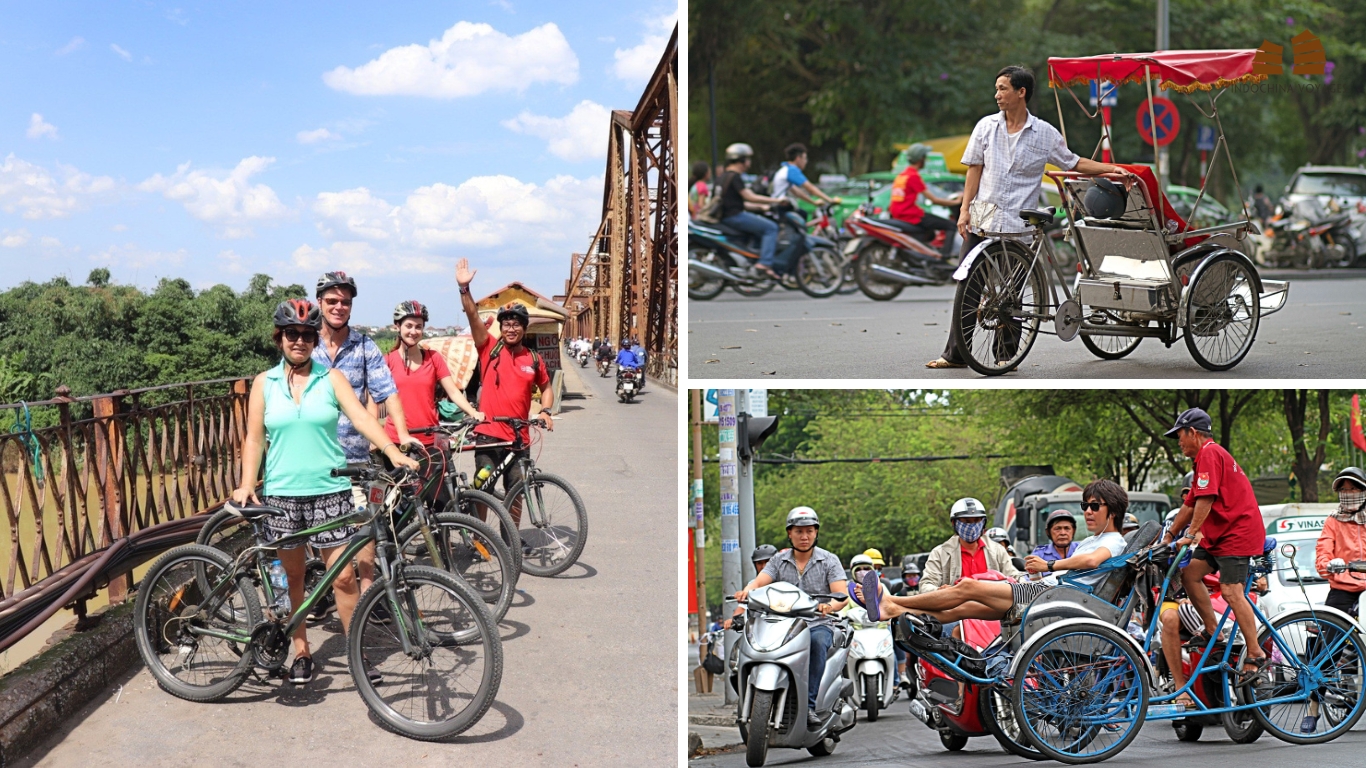
Taxis and Ride-Hailing Apps
Taxis are widely available in major cities and towns in Vietnam. Companies like Mai Linh and Vinasun are reputable taxi operators. Additionally, ride-hailing apps like Grab offer convenient and reliable transportation services, allowing you to book a car or motorbike taxi with ease. However, some less touristy areas such as Ba Be National Park or Northern Mountainous Areas (except Sapa) may not have available taxis or ride-hailing Apps. You only can choose between riding a bike or motor on your own or walking to stroll around these regions.
Some Ride-Hailing Apps in Vietnam you can download to prepare before coming:
Grab
Grab is a widely used ride-hailing app in Vietnam, which is available in almost all cities, such as Hanoi, Saigon, Hue, Danang, etc. It offers various vehicle options, including:
- GrabCar: Private car service similar to traditional taxis.
- GrabBike: Motorbike taxi service, ideal for navigating through traffic quickly.
- GrabCar Plus: Premium car service with higher-end vehicles and professional drivers.
- GrabTaxi: Traditional taxi service available through the app.
Besides transporting, Grab also has Food delivery services, you can order food in the area you coming in Vietnam on this app.
Be
Like Grab, Be is another popular ride-hailing app in Vietnam, known for its competitive pricing and availability. It offers the following options:
- BeCar: Private car service for a comfortable ride.
- BeBike: Motorbike taxi service for quick and convenient transportation.
GoViet
GoViet is a local ride-hailing app that provides various options for getting around:
- GoBike: Motorbike taxi service for efficient and affordable rides.
- GoCar: Private car service for a more comfortable experience.
Xanh SM
This is the first electric transport booking service in Vietnam (It was launched in 2022). For those who prefer a vehicle that is friendly to the environment, this is the best choice with the options below:
- Xanh SM Bike: Electric Bike service
- Xanh SM Car: Electric Car service for a private and comfortable experience
- Electric Car Rental: Rental Electric Car Service
- Airport shuttle service by electric car
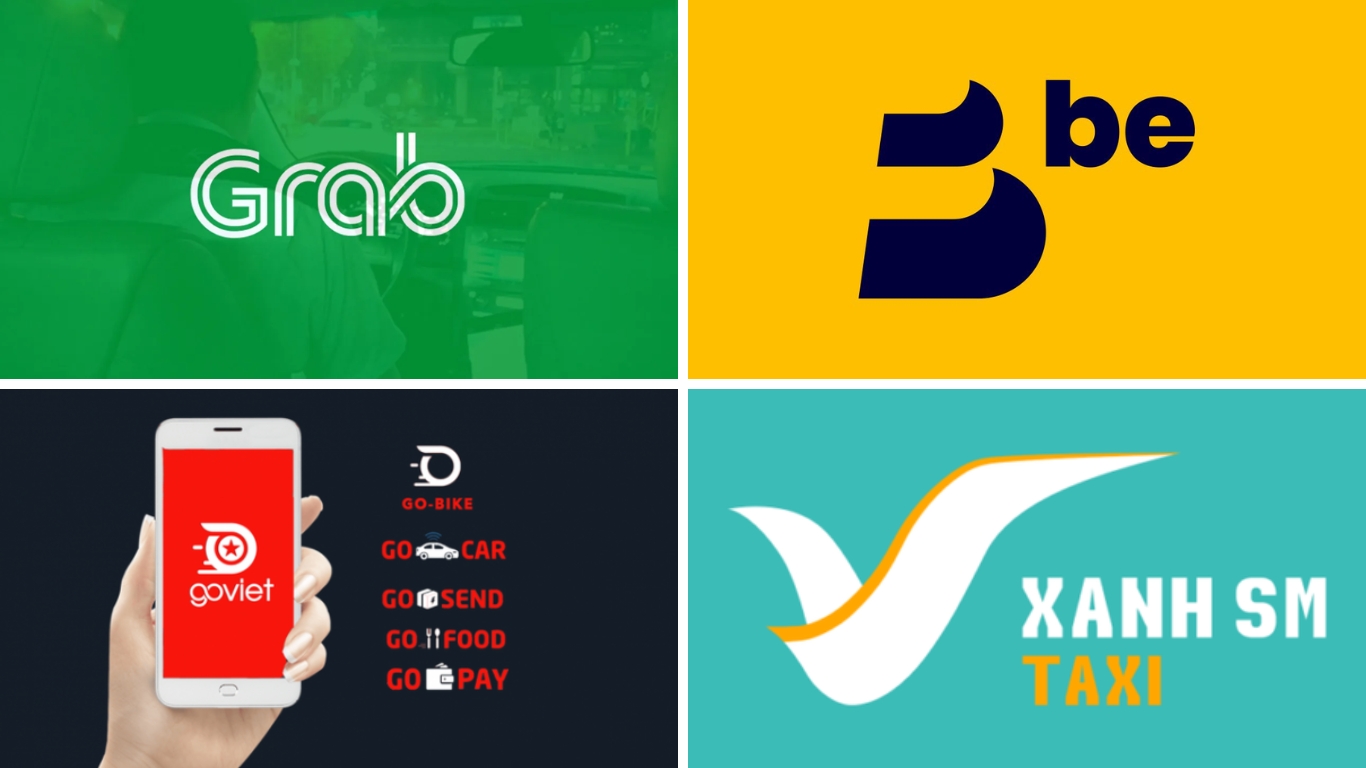
NOTE: Please note that not all apps above will be available in all areas in Vietnam. They are available in two main cities Hanoi and Ho Chi Minh City (Saigon). When using these ride-hailing apps, you can select your pickup and drop-off locations, see estimated fares in advance, track your driver’s location, and pay through the app. It’s recommended to have a local SIM card or access to mobile data to use these apps effectively during your stay in Vietnam.
With this comprehensive travel guide to transport in Vietnam, you now have a better understanding of the available options for exploring this beautiful country. Whether you choose to fly, take a train, rent a car, hop on a shuttle bus, embark on a cruise, or opt for unique modes of transport like motorbikes, cyclos, or cycling, Vietnam offers a memorable journey filled with cultural richness and natural beauty.
If you need to plan your itinerary and make your bookings in advance, contact with Indochina Voyages Team. Our Expert Travel Consultants will always welcome you warmly!
From Indochina Voyages Team
Maybe you will like: 3 Weeks Vietnam: A Comprehensive Guide and Perfect Itinerary

